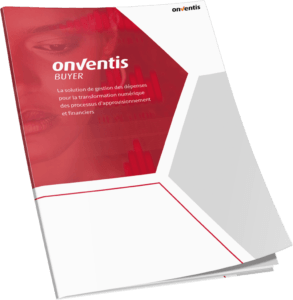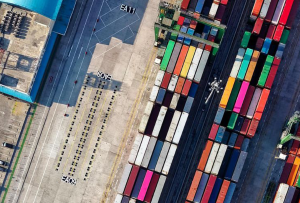Uncovering Procurement Risks: Why E-Procurement Solutions are Essential for Risk Management
Purchasing is an integral part of every company. The focus is not only on the procurement of goods and services but also, on ensuring quality and profitability. If companies do not use e-procurement systems in their procurement process, they expose themselves to considerable risks and dangers.
Manual procurement presents several challenges that can lead to errors, inefficiencies, and fraud. Companies face specific difficulties in their day-to-day procurement operations. Many choices increase risk, but there are ways to overcome these challenges. How can your business use e-procurement to optimise risk management and simplify processes?

Risk Management Through E-Procurement Systems: How Companies Can Protect Themselves From Threats
Purchasing is an integral part of every company. The focus is not only on the procurement of goods and services but also, on ensuring quality and profitability. If companies do not use e-procurement systems in their procurement process, they expose themselves to considerable risks and dangers.
Manual procurement presents several challenges that can lead to errors, inefficiencies, and fraud. Companies face specific difficulties in their day-to-day procurement operations. Many choices increase risk, but there are ways to overcome these challenges. How can your business use e-procurement to optimise risk management and simplify processes?
Supply risks and supplier failure
Global pandemics, political tensions, and natural disasters have been hindering procurement forever. The results are volatile markets, supply problems, and shortages that significantly impact supply chains. Procurement must deal with increased vulnerabilities and disruptions to ensure the usual flow of goods and materials.
In a study by the Business Continuity Institute, it was determined that over 37% of the disruptive factors in a company’s supply chain are influenced by direct suppliers. In this case, supplier dependency plays a major role. If a supplier cannot deliver the order, the procurer is faced with negative consequences. At the same time, being tied to specific suppliers means that hardly any alternative options have been provided, and the procurer is at risk of failing to fulfil his business just like his supplier.
The solution: Predefined contingency plans ensure purchasing in the event of a crisis. This way, possible procurement risks can be identified, while at the same time solutions are predefined. Emergencies are not left to chance and are instead dealt with immediately to ensure a quick resolution. In addition, the impact of unavoidable emergencies is minimised by applying predefined risk mitigation and emergency management measures. The emergency plan is also supported by incorporating precautionary means as early as the negotiation stage with suppliers. Therefore, the buyer creates a safety net and insures himself against possible disruptive factors. This increases supply security and minimises procurement risks thanks to systematic risk management.
In addition, it could be reasonable to establish safety stocks to safeguard crucial inventory levels. By stockpiling, warehouses are filled with supplies so that no production standstill occurs in of bottlenecks. However, it is important to consider that these warehouses require capital to be tied up due to the pre-financing of the goods and their storage. A weighing of the pros and cons of this measure is necessary, to make the correct decision for the individual procurement process.
Instead of a safety stock, supply chain diversification can be a cost-effective option. Alternative to stockpiling, buyers can rely on additional suppliers to reduce their dependency and expand their network. Having diversified regional connections is crucial to prevent dependencies on specific geographical locations and to mitigate procurement risks of encountering difficulties in the event of regional supply disruptions. By dividing procurement among multiple sources and regions, the buyer protects their procurement process. When searching for suppliers, e-procurement systems support by enabling the connection between procurer and potential suppliers using procurement networks. With digital supplier management, you can systematically maintain relationships and find qualified suppliers. Digitalising and building connections through all supplier-related processes ensures efficient supply chain and risk management.
Price risks and lack of contract management
Price hikes are related to increases in the cost of goods and services by suppliers. One of the main goals of procurement is to reduce purchasing costs to achieve savings; in case of price increases, procurers must act to mitigate the risks. This task becomes challenging when there’s a high dependency on the supplier, leaving procurers vulnerable and without bargaining power. Additionally, without established contract management processes, the supervision over the contracts can be lost. Contract management procedures and reminders help buyers stay on top of ongoing contracts, preventing notice periods, contract extensions or contract terminations from affecting procurement.
Long-term framework agreements offer the opportunity to take preventive measures against price and delivery risks and thus ensure supply security. These contracts are particularly useful when products are purchased from the same supplier over a longer period. The standard procedures in the occurrence of disruptions, liability concerns, and the ending of the contractual association are usually established by fundamental regulations. The use of framework agreements reduces the cost and time involved in dealing with orders and thus increases efficiency. It can also soften price fluctuations, therefore ensuring stable prices. For optimal management and control of contracts, it is reasonable to have a contract management solution in place. Read here how you can keep track of ongoing contracts by using predefined rules and reminders in our contract management module and minimise risks through targeted risk management.
Supplier risk
Here, the focus is on quality management and risks associated with the selection of the supplier. The procurer is responsible for finding suppliers. The company’s guidelines regarding compliance, sustainability, and other risk factors are included in this process. If a supplier is not subject to these guidelines, they can have an impact on the entire procurement process and the company.
Consistent assessments and evaluations of suppliers establish a reliable foundation for tracking their performance. Efficient supplier qualification, along with adaptable and dynamic questionnaires, allow procurement organisations to consistently collaborate with the most suitable suppliers, thereby increasing the number of sustainable suppliers and avoiding supply shortages. In this context, e-procurement systems provide valuable support by digitally linking buyers and suppliers, offering a platform for communication and information exchange. This allows procurers to retrieve information about their suppliers, request more information, and assess potential suppliers, thus minimising supplier risk!
Lack of overview
Having knowledge of their own requirements, expenses, and budget builds the foundation for making essential procurement decisions. However, in a decentralised purchasing process, lack of complete data and inefficient communication within the procurement team can make it impossible to gain an overview. This can make it difficult to adhere to the strategy and hinder the planning process.
Spend analytics is a common tool used by companies to detect and prevent potential bottlenecks early on. One critical aspect of this process involves evaluating the organisation’s reliance on specific suppliers and the associated procurement risks, including environmental problems, poor working conditions, and human rights violations. To evaluate suppliers and their sustainability practices, buyers can leverage e-procurement systems to generate customised questionnaires. This approach provides better supplier oversight, enabling the mitigation of supply chain risks. Furthermore, the systems facilitate a comprehensive and credible exchange of data, with the software collecting and compiling all information in every report. There’s no longer a risk of losing or concealing valuable information.
Compliance risks
The purchasing process is plagued by fraud, characterised by tell-tale signs such as maverick buying, incomplete order data, and substandard goods. The root cause is a lack of transparency resulting from inadequate supplier selection and vague procurement specifications, which renders effective supplier management impossible and exposes procurement to threats.
However, e-procurement systems can enhance purchasing transparency by covering the entire procurement process. This digital platform provides an overview of requisitions, selected suppliers, purchase orders, and invoices, along with a comprehensive data analysis to ensure adherence to guidelines. As a result, the purchaser retains control over suppliers and orders, and ensures company compliance.
Minimising procurement risks with e-procurement-systems: A conclusion on secure and efficient purchasing of the future!
An uninterrupted and secure supply chain is indispensable for any procurement organisation as it ensures that companies have constant access to the essential raw materials, goods or services. Any disruption in the supply chain can cause significant problems, but these can be mitigated by relying on various measures to minimise risks. In this regard, e-procurement suites form the foundation for daily success and efficiency by utilising digital technologies. The system offers optimisation potential and support at every step, from requisitioning to spend analysis. Moreover, e-procurement plays a pivotal role in a company’s risk management by aiding in supplier selection and qualification, assisting purchasers in contract management, and providing a comprehensive overview of the entire procurement process. With that, procurement risks can be easily and digitally recorded, controlled, and minimised while risk management becomes a breeze.
The Onventis All-in-One Procurement Suite covers procurement from sourcing to payment and procurement analysis. The system can significantly support limiting supply chain risks and optimising procurement processes. Digitalisation simplifies procurement and makes risk management a breeze. Be sure to follow us on LinkedIn or sign up for our newsletter for more ways to optimize your business to save time and money!
Weitere BlogsMore BlogsMeer blogs




